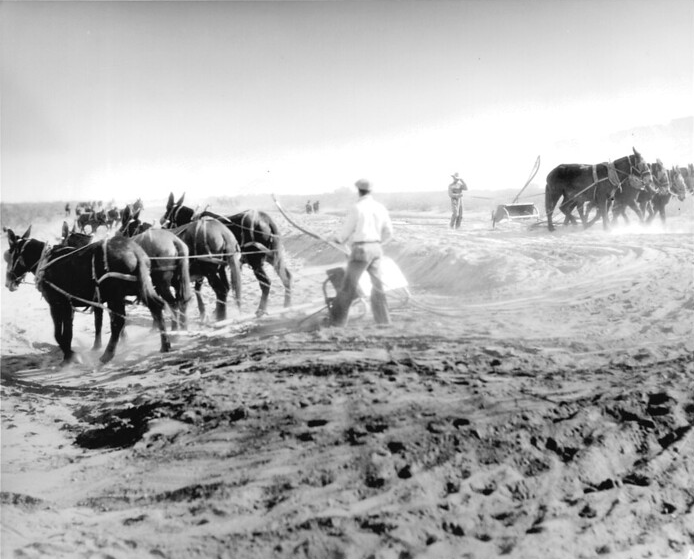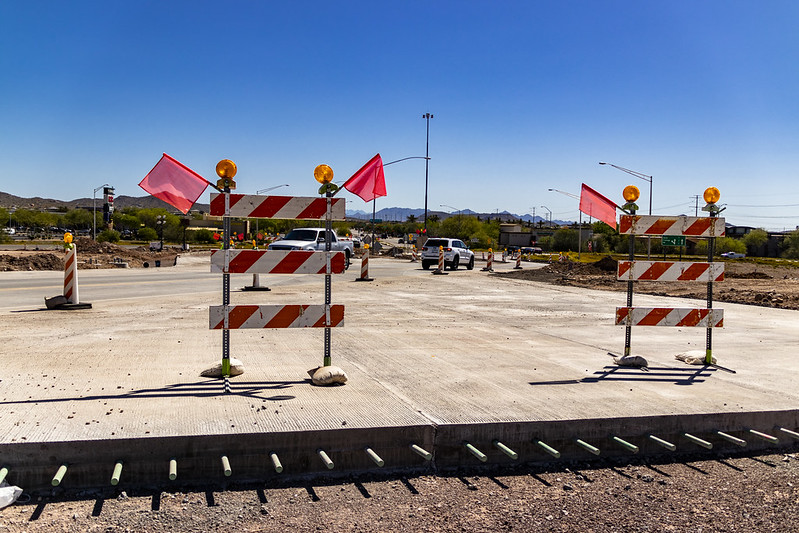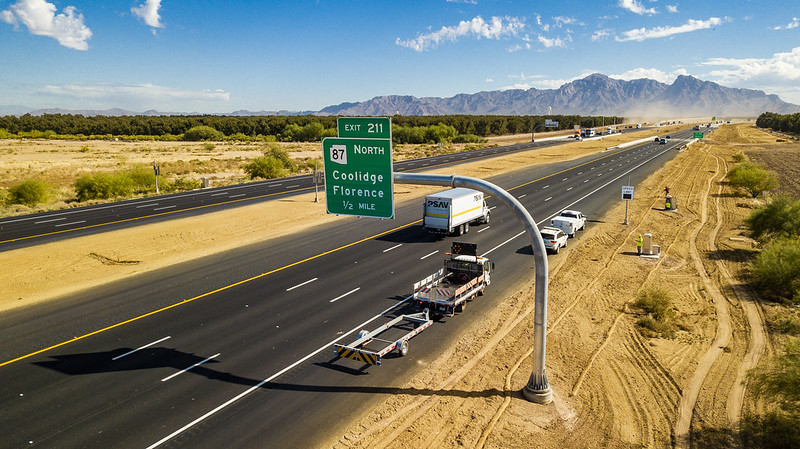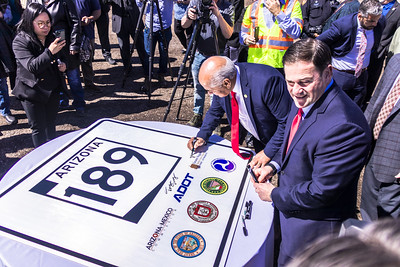Flashback Friday: Mule crews
Flashback Friday: Mule crews
Flashback Friday: Mule crews
Flashback Friday: Mule crews

Highway construction is and has been labor-intensive, but after we found this photo we couldn't be happier to be living in our modern, mechanized age.
Because these folks here driving the livestock are not farmers out plowing a field. They are actually Arizona Highway Department crews in the process of grading a highway. US 60 between Salome and Aguila, to be exact. This mule-driven photo is from Dec. 7, 1933.
As you might know, grading is the process of smoothing the base layer of a road to remove divots, washboards and other high or low points. For dirt roads, such as this stretch of US 60 (which would also be co-signed with US 70 for a time), grading is basically all the roadwork and maintenance that is done. Today construction crews have grading machines for this type of work. We can only imagine those machines are a bit more reliable than the mules and produce less ... um ... waste.
The year this photo was snapped is significant because it was actually a bit of turning point for highway construction in Arizona. According to our report on the state's transporation history, that year the federal Public Works Administration gave Arizona $5.2 million for road projects, which covered hundreds of miles of grading and draining, oiling, sealing and paving, along with bridge construction, shoulder-widening and railroad-crossing construction.
By 1933, Arizona was also the leading state in the West when it came to oiling, or spraying "low-type bituminous surfacing" on, gravel roads. At the start of the year, more than 1,000 miles of state highways had been oiled, and when State Route 87 in Chandler was surfaced, for the first time a person could drive between Phoenix and Tucson without driving on a single stretch of a gravel road. At the end of 1933, the state reported that all its highways, with limited exceptions, had been oiled or actually paved.
That's all fascianting for us, but it most likely meant little to our mule-driving friends here, who were probably just happy if their stubborn charges kept the grader moving.





